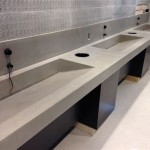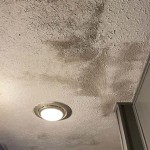Replacing a Bathroom Vanity and Sink: A Step-by-Step Guide
A bathroom vanity is a focal point in any bathroom, offering storage and functionality. Over time, vanities can become outdated, damaged, or simply no longer meet your needs. Replacing a bathroom vanity and sink can be a transformative project, enhancing both the aesthetics and functionality of your bathroom. This comprehensive guide will provide you with a detailed step-by-step process to ensure a successful and stress-free renovation.
1. Planning and Preparation
Prior to starting any demolition or installation, it is crucial to plan and prepare adequately. This ensures a smooth and efficient process. The following steps will guide you through the initial planning phase:
a) Determine Your Needs and Style: Begin by considering the size, style, and functionality required for your new vanity. Evaluate your storage needs, desired countertop material, and the overall design aesthetic you wish to achieve. Browse online and visit local showrooms to gather inspiration and explore various options.
b) Measure Your Space: Accurately measure the available space in your bathroom, including the width, depth, and height. Consider the location of plumbing fixtures, electrical outlets, and any existing fixtures that may need to be relocated. These measurements will help you determine the appropriate size vanity that will fit seamlessly into your bathroom.
c) Budget and Materials: Set a realistic budget for the project, taking into consideration the cost of the vanity, sink, plumbing fixtures, countertop, and any additional materials. Research prices from different suppliers and compare options to find the best value for your investment.
d) Gather Tools and Materials: Assemble the necessary tools and materials for the installation. These may include a level, tape measure, utility knife, screwdriver, drill, wrench, pipe wrenches, plumber's putty, silicone sealant, caulk gun, and safety goggles. Ensure that you have all the materials readily available before you start.
2. Demolition and Removal
Once you have planned and prepared, it's time to tackle the demolition and removal of the existing vanity and sink. Carefully follow these steps to ensure safety and minimize damage:
a) Turn off the Water Supply: Locate the shut-off valves for the water supply to the bathroom. Turn off the water supply to the vanity and sink to prevent leaks during the demolition process. Before you begin, run the faucet to drain any remaining water in the lines.
b) Disconnect Plumbing: Disconnect the hot and cold water supply lines beneath the sink. Use a wrench to loosen the nuts that connect the hoses to the supply valves and sink. Carefully disconnect the drainpipe from the sink and the drain line under the vanity. If necessary, you can use a pipe wrench to loosen stubborn connections.
c) Disconnect Electrical Outlets: If your vanity has an electrical outlet, turn off the circuit breaker and disconnect the electrical wire from the outlet. Do not attempt to remove the outlet without first disconnecting the power supply.
d) Remove the Vanity: Carefully remove the vanity from the wall. If the vanity is attached with screws, remove the screws and detach the vanity from the wall studs. If the vanity is secured with glue or adhesive, you may need to use a pry bar to gently separate it from the wall.
e) Remove the Sink: Once the vanity is removed, remove the sink from the countertop. Disconnect the drainpipe from the sink and remove any clips or screws that hold the sink in place. If the sink is attached with adhesive, you may need to use a scraper or a utility knife to remove it from the countertop.
3. Installation of the New Vanity and Sink
Now that the existing vanity and sink have been removed, you can begin installing the new vanity and sink. Follow these steps carefully to ensure a secure and functional installation:
a) Prepare the Area: Ensure the area is clean and free of debris. If necessary, repair any damage to the walls or flooring before proceeding with the installation. Consider using a primer to help the new vanity adhere to the wall and floor, if needed.
b) Install the Vanity: Position the new vanity in the desired location and level it using shims or adjustable legs. Secure the vanity to the wall using screws or a construction adhesive. If attaching to wall studs, use screws that are long enough to penetrate the stud for maximum support. Make sure the vanity is stable and securely attached to the wall.
c) Connect the Plumbing: Connect the new water supply lines to the vanity and sink. Use plumber's tape to seal the threads of the supply valves before tightening them with wrenches. Ensure that the connections are tight and secure to prevent leaks.
d) Install the Sink: Position the new sink on the vanity countertop and use silicone sealant or plumber's putty to create a watertight seal between the sink and the countertop. Secure the sink to the countertop using clamps or clips, if necessary.
e) Connect the Drain Pipe: Connect the drainpipe from the sink to the drain line under the vanity. Use plumber's tape to seal the threads of the drainpipe and tighten it securely. Ensure that the drain pipe is securely connected to the drain line and that there are no leaks.
f) Connect the Electrical Outlet: If your new vanity has an electrical outlet, connect the electrical wire to the outlet. Double-check the wiring and ensure that it is properly grounded before turning on the power supply.
4. Finishing Touches
Once the new vanity and sink are installed, it's time to add the finishing touches. This final stage will enhance the overall appearance and functionality of your bathroom:
a) Install the Faucet and Accessories: Install the new faucet and any other accessories, such as soap dispensers, towel bars, or storage shelves. Follow the manufacturer's instructions carefully for proper installation.
b) Apply Caulk and Sealant: Apply a bead of silicone sealant around the base of the vanity and sink to prevent water from leaking behind the vanity. Also, caulk any gaps between the countertop and the wall to prevent water damage.
c) Clean Up: Clean up any mess or debris left from the installation. Wipe down the vanity, sink, countertop, and surrounding areas to remove any dust or sealant residue.
d) Test for Leaks: Turn on the water supply and check for any leaks. If you find any leaks, tighten the connections or apply additional sealant as needed.
Replacing a bathroom vanity and sink is a significant undertaking that can dramatically improve the aesthetics and functionality of your bathroom. By carefully planning, preparing, and following the steps outlined in this guide, you can achieve a successful and rewarding renovation. Remember to take your time, pay attention to detail, and prioritize safety throughout the entire process.

How To Install A Bathroom Vanity And Sink

How To Install A Bathroom Vanity


How To Remove A Bathroom Vanity Budget Dumpster



12 Easy Steps To Install Bathroom Vanity And Sink

How To Install Or Remove A Bathroom Vanity Homeserve Usa

Who Installs Bathrooms Vanities And Sinks

Related Posts







